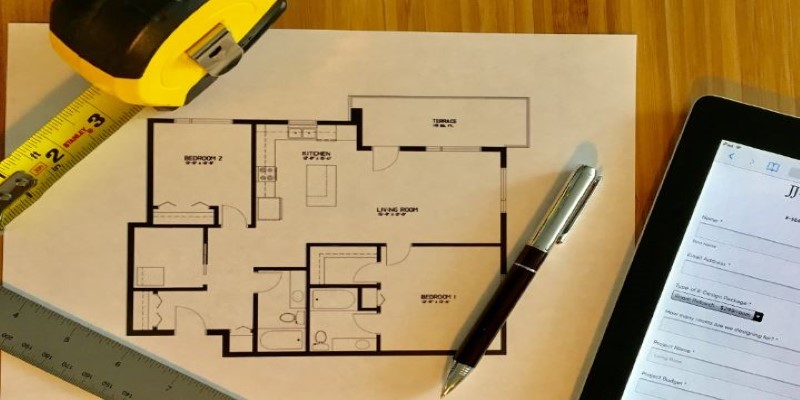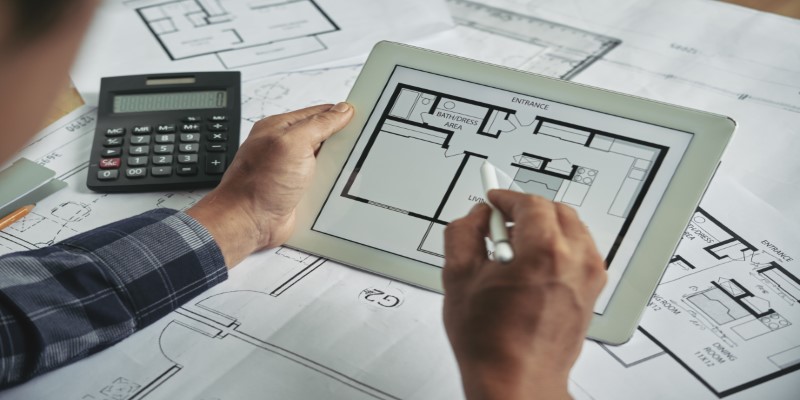The Complete Guide to Calculating Your Home’s Square Footage
When it comes to buying or selling a home, the size of the property can make a huge difference. But how do you really measure a home’s size? While it might seem like a simple task, calculating the square footage of a house involves more than just measuring the walls. Whether you're trying to assess the value of your property, prepare for a renovation, or simply satisfy your curiosity, knowing how to calculate square footage accurately is essential.
In this article, we discuss how to calculate the square footage of your house and provide advice and tips to make the process smooth.
What is Square Footage?
Calculate square footage. It's easier to understand if you know what square footage means: Square footage refers to the area of the entire home and is used to calculate square footage that measures all the usable living spaces inside the structure. This space measurement is essential in determining the space you have and is mainly used when pricing a home.
The footprint of the house is square footage, but the square footage does not just describe the footprint; it describes every area inside the walls. Therefore, thick walls, balconies, and spaces that are left unfinished are subtracted from the square footage. Rooms are measured independently, and all their areas sum up to determine the total square footage of a home.
Step-by-Step Guide to Calculate Square Footage
This means looking at the dimensions of each room, the length, and the width, and multiplying those numbers together to get the total square feet. Here's a step-by-step guide on how to do it:
Gather Your Tools
You’ll need a tape measure, a calculator, and a pen and paper to note down your measurements. If you prefer, you can also use a measuring wheel for larger areas.
Measure Each Room

Measure the length and width of each room. Length and width are taken from the inside walls, which define the living space. Take the dimensions of your living room, for instance; this might be 12 feet long and 15 feet across. You multiply those two numbers together: 12 x 15 = 180 square feet. Once you do that for each room in your house, including bedrooms, bathrooms, kitchens, hallways, and any other finished areas, you will have an idea of the total square footage.
Calculate the Square Footage for Irregularly Shaped Rooms
Some rooms might not be perfect rectangles. If you’re dealing with an irregular shape, like a triangular or circular room, you can still calculate the square footage by breaking the space down into smaller, more manageable shapes. For example, if you have a triangular section, calculate the area of the triangle separately, using the formula for the area of a triangle (base x height ÷ 2), then add it to the rest of the room’s square footage.
Account for Hallways and Other Spaces
Hallways and smaller spaces should not be overlooked when calculating square footage. Measure them just like any other room and add their dimensions to the total. This ensures that all usable living areas are accounted for in your final square footage calculation.
Consider Multi-Level Homes
For multi-story homes, each floor needs to be measured separately. After measuring each level’s usable space, add them together to get the total square footage. Don’t forget to include areas like bedrooms, bathrooms, and kitchens on every level when calculating the overall square footage.
Subtract Unfinished Areas
Unfinished spaces, such as basements or attics, are generally excluded from square footage calculations. If you want to include these areas, ensure they are finished according to local building codes and meet the requirements. Only livable, finished spaces should be included in the final square footage.
Key Factors to Keep in Mind
While calculating square footage is straightforward, there are a few things you should keep in mind to ensure your measurement is as accurate as possible.
Measuring Only Usable Space
Only the areas where you can live, sleep, cook, and entertain should be measured. This means excluding spaces like garages, unfinished basements, and any external structures that aren't part of the home’s main living area.
Standard Methods of Measurement

Different real estate markets might have specific guidelines for calculating square footage. Some areas may include outdoor patios or balconies in the measurement, while others may not. Always check local regulations if you're planning to use square footage to sell or purchase a home to make sure you're following the right standard.
Consider Ceiling Heights
In some cases, particularly with homes that have vaulted ceilings, square footage can be calculated differently. Some measurement standards allow for ceilings higher than a standard height (usually 8 feet) to be factored in as additional space.
How Does Square Footage Affect Property Value?
Square footage plays a critical role in determining the value of a home. Larger homes generally cost more due to their larger living space, but square footage isn’t the only factor in pricing. Other aspects, like the home’s location, age, condition, and amenities, also affect the market value. Still, a larger home typically provides more living space, which can be appealing to buyers looking for room to grow or to accommodate a larger family.
When selling your home, you can use the square footage to help justify the asking price. Conversely, buyers often use square footage to compare homes and decide which one offers the best value for the price. A well-calculated square footage can help you make informed decisions on pricing and negotiations.
Conclusion
Understanding how to calculate a home's square footage is an important skill for homeowners, buyers, and sellers alike. Whether you're preparing to sell, buy, or simply want to know how much living space you have, measuring square footage accurately will give you a clearer picture of your home's size and value. By following the steps outlined in this guide and keeping key considerations in mind, you can ensure that your square footage calculation is precise and reliable.












